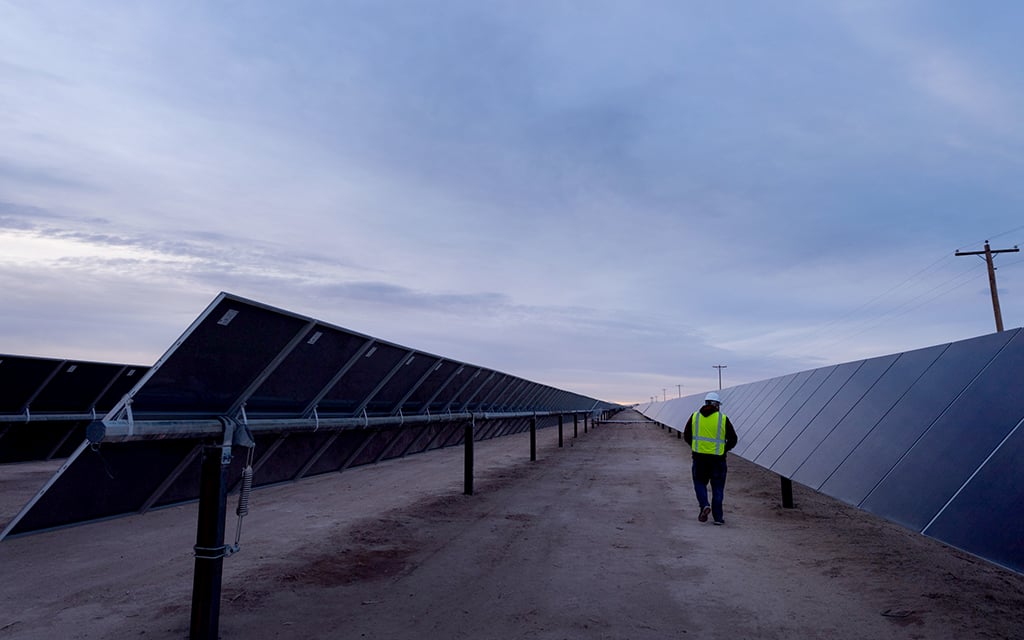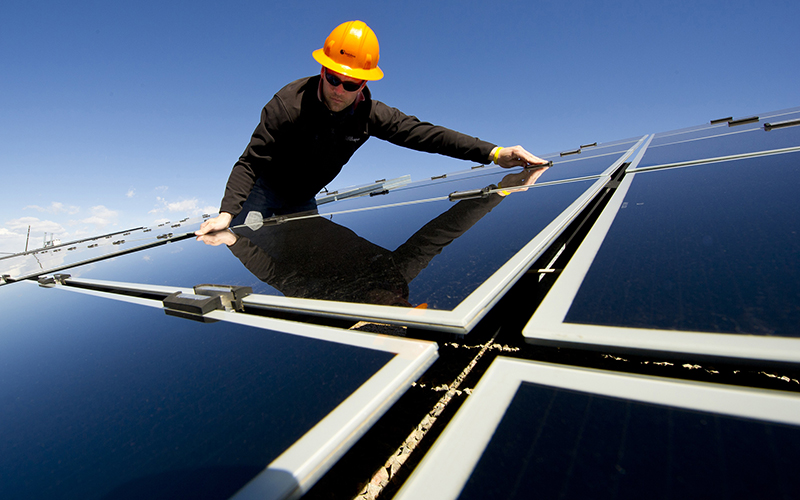FLAGSTAFF – Salt River Project has partnered with Clenera, a private renewable energy company, to bring Arizona its largest solar plant in 2024.
Construction of the CO Bar Solar plant will begin in 2023 on 2,400 acres of private land northwest of Flagstaff in Coconino County. Upon completion, it will offset 1 billion pounds of carbon dioxide each year while generating power for 80,000 Arizona homes.
The project is designed to help SRP meet its decarbonization goals. It expects nearly 50% of the energy it provides customers to come from carbon-free resources and reach 2,025 megawatts of solar by 2025.
CO Bar Solar will provide 1,000 megawatts of solar in total, with SRP customers receiving 400 megawatts. Clenera will be operating the plant and has control over who receives the rest of the power. Jared McKee, Clenera’s vice president of business development, said it will benefit all Arizonans and lower the cost of clean energy.
He said this project puts sustainability at its core for the entire development process.
“When we look at the scale of this project, there aren’t really projects like this across the U.S. where you have up to 1,000 megawatts of a project all put together,” McKee said. “We’ve developed this project in coordination with the county officials, with the Arizona Game & Fish to ensure that we have wildlife corridors, to ensure that all the sustainable pieces of construction are done so that we can have a project that we can all be truly proud of.”
In addition to being sustainable for the environment from start to finish, McKee said it will be sustainable in costs and reliability.
“You’re never going to have a full market conversion unless it can be done at a cost that makes sense for every single ratepayer out there, every single person who flips on a switch,” McKee said.
SRP’s relationship with solar has been rocky for years. The utility initially encouraged customers to install rooftop solar, but in 2015, it began charging higher rates for customers who installed solar systems after December 2014. In response, four customers filed an antitrust lawsuit in 2020. The lawsuit was thrown out by a lower court that year but reversed by a three-judge panel of the 9th U.S. Circuit Court of Appeals last year.
One of the plaintiffs alleged in the complaint that he was “‘directly and economically hurt by’ SRP’s exclusionary pricing scheme, which is aimed at suppressing competition by discouraging customers from installing solar-energy systems.” The comments were related to the 2015 public price process, which was updated in 2019.
SRP still charges solar customers higher rates, but that could change now that the lawsuit can proceed.
Michael Reynolds, manager of resource analysis and planning at SRP, said the company balances affordability, sustainability and reliability.
“While the sun is shining, we have great benefits from the solar that’s online,” Reynolds said. “Many of our customers have come to us and asked for something that can help serve their sustainability goals throughout the day. They don’t want something that just helps when the sun’s up. They want something that can continue into the nighttime.”
Reynolds said SRP is investing in wind energy and long-duration solar storage to make clean energy more reliable and resilient. These two solutions can help provide carbon-free energy at night and in more unpredictable weather.
“We really do have to think about some of those very rare cases where you have multiple days of weather that could impact how things operate,” he said. “It will be important for us to make sure that we have the resources online that can jump in if there’s an emergency or some unexpected weather system demand. That’s really why we need to have a diverse resource portfolio and that’s what we’ve been doing.
“Now, as we look out into the distant future, I do believe that we can think about what it would look like to be totally carbon-free. But we’ll need to think about how we can maintain reliability and diversity across resource types as we pursue that decarbonization.”
Solar is Arizona’s number one source of renewable energy, and SRP is the leading power provider in metro Phoenix. The state is fifth in the nation for solar-powered electricity, according to the U.S. Energy Information Administration. Arizona going 100% solar or completely carbon-free would be difficult given today’s technology constraints, but it’s not unattainable.
Barry Petrey, the manager of resource acquisition at SRP said it’s possible for Arizona to see a clean energy future.
“In the future, I could envision certainly a carbon-free portfolio,” Petrey said. “100% carbon-free resources.”


